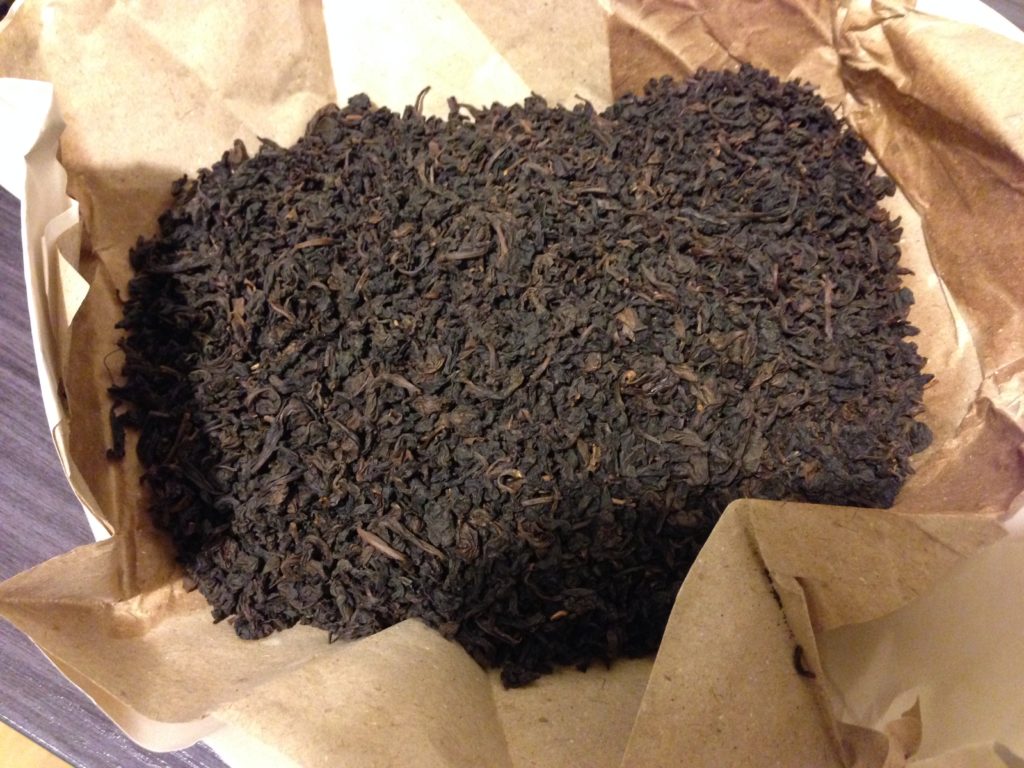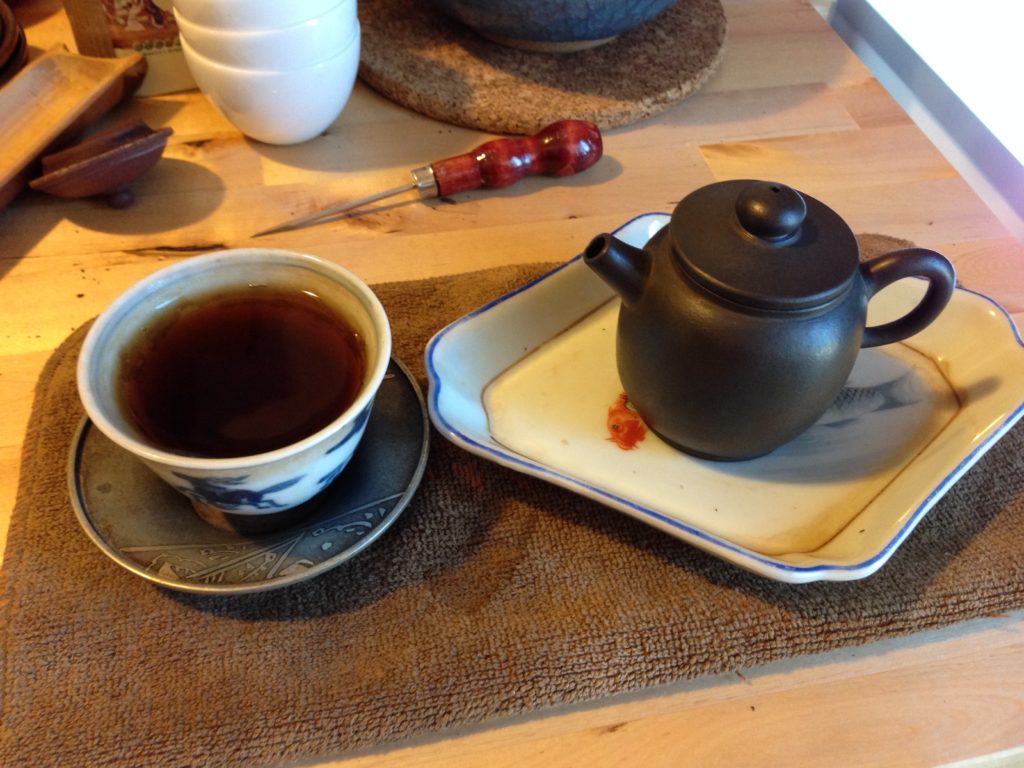Traveling to China soon? Want to buy some tea for yourself or someone else? I thought I should do a guide on what to do when you’re in China and looking for tea. Note: things I say here do NOT apply to Hong Kong or Taiwan. China’s commercial landscape for tea is pretty different from these two places and so they operate under separate rules.
First of all, we should start with the question of where to go to buy said tea. Now, if you can answer a few quick questions
1) Do you speak any Mandarin?
2) Are you buying for yourself?
3) Do you have a lot of time this trip?
If the answer to any of these three questions is a “no,” especially if you answer “no” more than once, then the answer is easy – you should go shop at one of the big chain stores for tea, such as Wuyutai (state run) or Tianfu (Taiwanese owned tea conglomerate). Buy whatever suits your fancy there, and move on to do your tourist thingy.
Before you say this is mercenary or too ismple – let me explain. If you don’t speak any Chinese, your likelihood of landing good tea at a local shop is pretty low. There might be some local specialty tea store that can deal with you in English, but your run of the mill tea shop on the street corner probably can’t. You may be able to get away with some sign language, but you need some luck and goodwill from the store owner to not get screwed in the process. Granted, even if you don’t speak Mandarin you can still go to see a tea market, just don’t expect any great bargains or a guaranteed positive experience doing it.
If you’re not buying for yourself – it’s hard buying tea for friends. If your friend is so unkind as to stick you with a tea buying mission while you’re on your trip to China, especially if you yourself are not too keen on buying tea on the trip, well, they pretty much deserve whatever you find convenient. Also, places like Wuyutai or Tianfu won’t screw you with fake tea – they’ll just screw you with higher prices. Lastly, the tea they sell will come in decent packaging, relatively speaking. This may be important if you’re buying a gift or for the unwashed who judge teas by their packaging materials.
If you’re on a short trip and barely have time to fit in a visit to the Forbidden City, then wasting half a day just to get to a tea market is probably not the best idea. You can buy tea online from your own home, but you can’t visit sites online (not really anyway). Go do your touristy thing and ignore the tea.
Now, if your answers to all three questions are “yes”, or if you feel adventurous enough and seeing a tea market is your idea of fun, then you should try to investigate what your city’s local tea mall is (there’s one in a lot of major cities). Some are pretty far from city center, while others are right inside the city. Big cities often have multiple markets. In Shanghai, for example, there’s the Tianshan tea market, which is not huge or great by Chinese standard, but it’s certainly more teashops than any visitor would’ve seen in person, and it’s very close to a subway station.
There are also a lot of small, local teashops. These fall into two categories. One is the run-of-the-mill kind, which are basically your neighbourhood tea shop. They will sell regular stuff – often lower end. Prices are probably not bad here, although if you look like a foreigner it’s quite possible that they will give you a “foreigner special” and screw you in the process. If you just need some basic, no name tea, and if you don’t care about packaging or what not, these might not be bad options. These stores look grubby, basic, usually sparsely decorated, maybe just with some tea canisters on the sides, and not much else. The owner likely lives in the store as well with his family.
There are now another kind of teashops – these are the high end stuff, and you’ll know it if you see it. They have nice decor, pretty sales girls, good looking teaware, and generally are trying to sell you “art” instead of “tea”. I’d personally stay away from all of these. They do sometimes offer nice tea, but they will never be a bargain. There is also a high likelihood that they’re merely dressing up very average tea as good and exclusive, and so you’re really no better off than just buying online.
The decision to go to a tea market is a little more complicated than that. If you hate green tea, only drink puerh, and you’re in Shanghai, you are probably better off trying to see if Eugene of Tea Urchin wants to meet up with you instead.  The thing is, puerh isn’t that popular in Shanghai, and while they will certainly have some at the tea markets, the selection will not be great, and prices may not be good either. If you are looking for green tea, you’ll have an endless supply there. If you want something not popular at the area you’re at, then it’s more of a crapshoot.
If you go to a tea market though, there’s a secondary level of “where to go” that now enters the equation. You will be confronted by rows and rows of teashops. You only have a day, or half a day, or whatever. Where should you go? Which shop should you enter to spend your precious tea shopping time at?
Obviously if you have something specific in mind, like a specialty store you read about, or a contact you made, then by all means go there. But if you are just visiting for the first time with no reference, then you should first consider what kind of tea you are interested in. You should almost always head into a store that only sells one kind of tea – if you want tieguanyin, look for a tieguanyin store. If you want white tea, try to find a white tea specialist. While this is by no means a guarantee that you’ll find great tea, it’s better than heading into one of the many generic stores that sell everything under the sun. To this end, learning what the characters for your favourite tea looks like could be useful, especially when you’re not looking for puerh. If you’re looking for puerh, stores that sell only one brand tend to have better stuff than stores that sell a hodgepodge of brands. However, stores that sell a hodgepodge are more likely to have bargains, provided you have time to find them and know what you’re doing. This usually require repeated visits. There is the same divide between high end store and grubby store at many tea markets. It is directly related to what your shopping experience will be like – whether it will be pleasant or not. This is hardly a good guage for quality though – grubby stores often can have very good tea, while a high end looking one can actually be selling inflated crap. So for these cases it’s really a matter of you being able to taste the difference.
These are basically your options for buying tea in China. There’s never really any reason to buy from a department store or anything like that. I will cover what you do once you enter a store in another post.
 A bag of tea, really, nothing too fancy. You can see the bag is quite old. Few shops package teas this way now. I found this in the back of a cupboard of puerh in a local shop. It’s their only one. I asked how much, and the owner clearly has no idea, and just said “uh, whatever, 50?” That’s about $6 USD
A bag of tea, really, nothing too fancy. You can see the bag is quite old. Few shops package teas this way now. I found this in the back of a cupboard of puerh in a local shop. It’s their only one. I asked how much, and the owner clearly has no idea, and just said “uh, whatever, 50?” That’s about $6 USD Aged oolong, all right. It’s somewhere between 20 and 30 years old. The fact that it’s a private company in Shantou that packaged it means that it couldn’t have been made earlier than maybe the mid 80s. The tea is not heavily rolled like new tieguanyin tend to be, and looks traditionally processed with high firing. It’s wrapped in two sheets of paper. Given that it’s been just sitting around in a cupboard, the tea is actually in pretty good shape.
Aged oolong, all right. It’s somewhere between 20 and 30 years old. The fact that it’s a private company in Shantou that packaged it means that it couldn’t have been made earlier than maybe the mid 80s. The tea is not heavily rolled like new tieguanyin tend to be, and looks traditionally processed with high firing. It’s wrapped in two sheets of paper. Given that it’s been just sitting around in a cupboard, the tea is actually in pretty good shape. It’s got a nice, aged taste to it. It’s not the most full bodied or fragrant aged oolong I’ve had – open air storage probably has something to do with it. It’s only minimally sour, and is in very good shape. The only knock is that the tea is somewhat chopped up – probably because of repeated handling over the years. For $6, it’s a steal.
It’s got a nice, aged taste to it. It’s not the most full bodied or fragrant aged oolong I’ve had – open air storage probably has something to do with it. It’s only minimally sour, and is in very good shape. The only knock is that the tea is somewhat chopped up – probably because of repeated handling over the years. For $6, it’s a steal.
Yeah whisky prices have been leaking too, as well as luxury watches. I wrote a post maybe a decade ago…